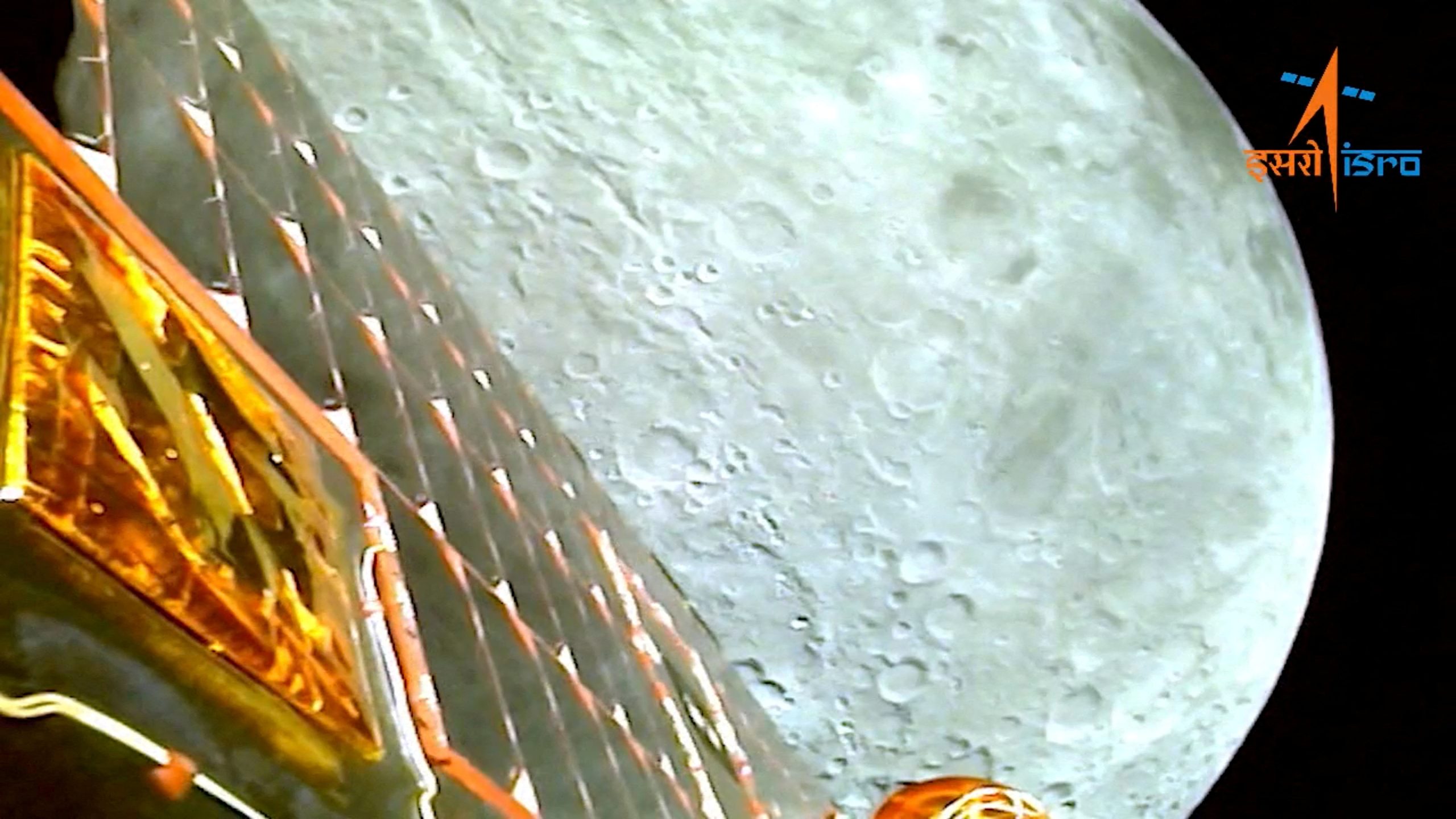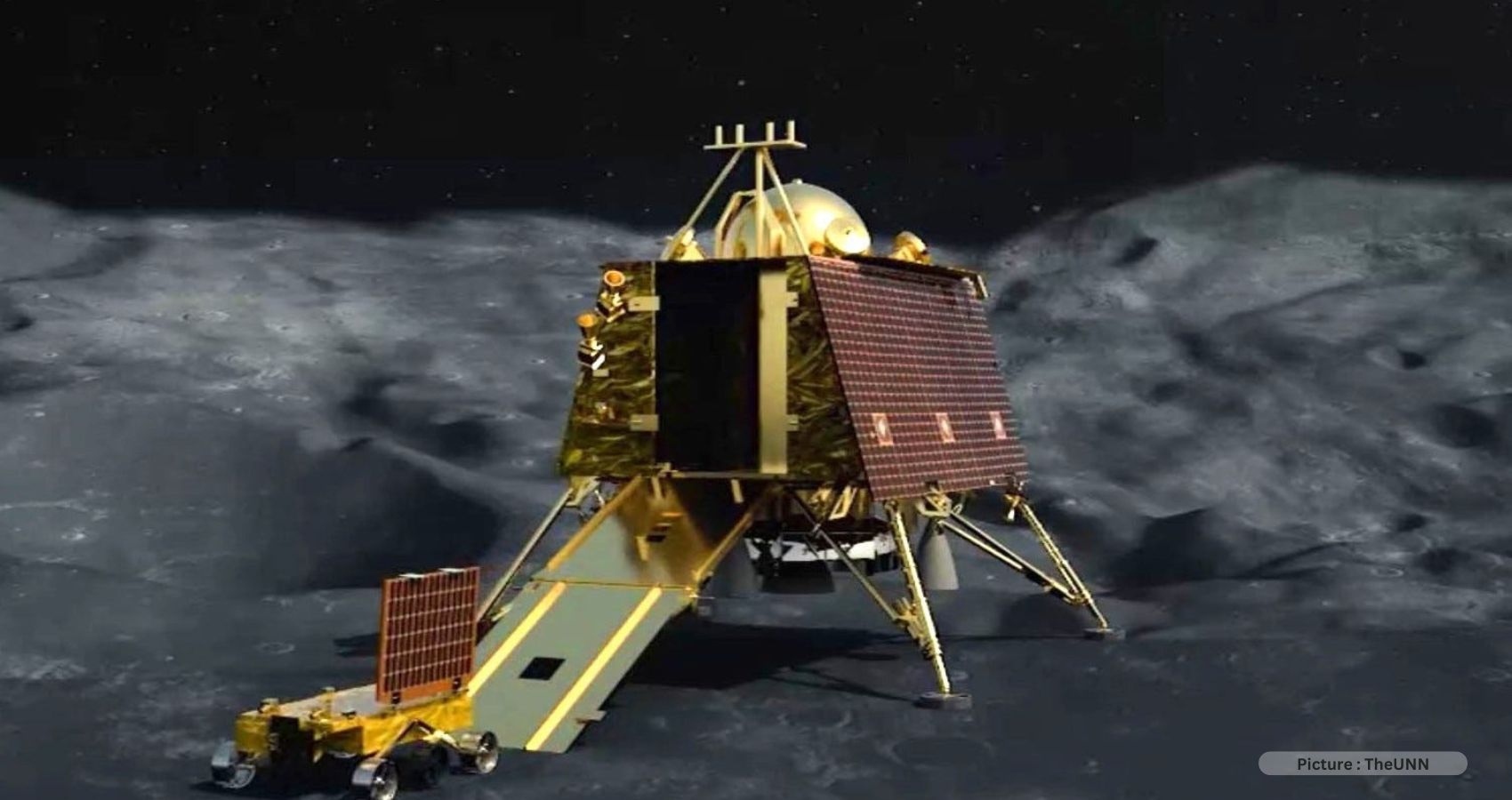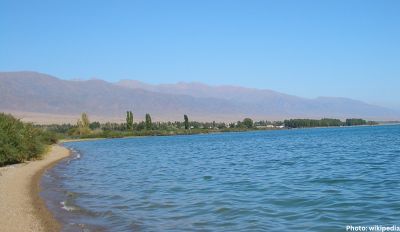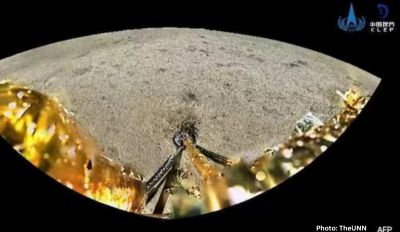India has officially concluded its lunar mission with the Pragyan rover, the pioneering craft that successfully reached the elusive lunar south pole. The Indian Space Research Organisation (ISRO) confirmed the rover’s transition into “Sleep mode” following its fruitful two-week assignment, equipped with charged batteries and an active receiver. ISRO expressed hope for a future reawakening for new tasks but also acknowledged the possibility of the rover remaining a perpetual lunar representative for India.
In a statement, ISRO stated, “Hoping for a successful awakening for another set of assignments! Else, it will forever stay there as India’s lunar ambassador.” This decision marks the end of a remarkable lunar endeavor that placed India alongside prestigious spacefaring nations like the United States, China, and the former Soviet Union. Furthermore, India achieved a significant milestone by venturing beyond these nations to reach the challenging lunar south pole, following the unfortunate crash of Russia’s Luna-25 during a similar attempt.
Chandrayaan-3, India’s lunar mission, achieved a remarkable and precise touchdown, a stark contrast to the earlier failed attempt in 2019. This achievement sparked jubilation across the nation, with the media lauding it as India’s most outstanding scientific accomplishment to date.

Pragyan, the rover, played a pivotal role in this mission by embarking on a journey of over 100 meters (330 feet) across the lunar surface. During its travels, it confirmed the presence of essential elements such as sulphur, iron, and oxygen on the moon, providing valuable insights into lunar composition and geology.
With the lunar mission’s success, India has set its sights on the sun, launching a probe on Saturday designed to study solar phenomena, particularly solar winds that can disrupt Earth’s magnetosphere and lead to the captivating auroras. ISRO has reported that the satellite is currently in good health and orbiting Earth as it prepares for its ambitious 1.5 million-kilometer (930,000-mile) journey towards the sun.
India’s lunar mission, encompassing the Pragyan rover and the Chandrayaan-3 spacecraft, has concluded after a productive two-week assignment. The Indian Space Research Organisation (ISRO) announced that the Pragyan rover has entered “Sleep mode,” equipped with charged batteries and an active receiver, marking the end of its lunar exploration phase. ISRO expressed optimism for the rover’s potential reactivation for future missions but also acknowledged the possibility of it remaining a permanent lunar envoy for India.
ISRO conveyed this development in a statement, stating, “Hoping for a successful awakening for another set of assignments! Else, it will forever stay there as India’s lunar ambassador.” This decision signifies the culmination of a remarkable lunar endeavor that propelled India into the ranks of esteemed spacefaring nations, including the United States, China, and the former Soviet Union. Notably, India went beyond these achievements by successfully reaching the challenging lunar south pole, an accomplishment that followed the unfortunate crash of Russia’s Luna-25 during a similar attempt.
Chandrayaan-3, India’s lunar mission, achieved a precise and flawless landing, a stark contrast to its previous failed attempt in 2019. This achievement sparked jubilation throughout the nation, with the media heralding it as India’s most significant scientific achievement to date.
Crucially, the Pragyan rover played a pivotal role in the mission’s success, embarking on an extensive journey covering over 100 meters (330 feet) across the lunar terrain. During its travels, Pragyan confirmed the presence of key elements such as sulphur, iron, and oxygen on the moon. These findings have provided invaluable insights into lunar composition and geology, enhancing our understanding of Earth’s celestial neighbor.
Having achieved success on the lunar front, India is now setting its sights on the sun, launching a probe designed to study solar phenomena, particularly solar winds that can disrupt Earth’s magnetosphere and give rise to the captivating auroras. ISRO has reported that the satellite is currently in a healthy state and is orbiting Earth as it prepares for its ambitious 1.5 million-kilometer (930,000-mile) journey towards the sun.
In summary, India’s lunar mission, highlighted by the Pragyan rover and the Chandrayaan-3 spacecraft, has officially concluded its lunar exploration phase after accomplishing a series of experiments over a two-week period. ISRO’s decision to transition the rover into “Sleep mode” marks the end of this remarkable lunar journey, while also holding the possibility of future reactivation for new missions. This achievement elevates India to the ranks of prestigious spacefaring nations, with the unique distinction of reaching the challenging lunar south pole. Moreover, the flawless landing of Chandrayaan-3 in contrast to the previous attempt in 2019 garnered widespread acclaim, establishing it as a landmark in India’s scientific endeavors.
The Pragyan rover’s extensive exploration of over 100 meters on the lunar surface confirmed the presence of essential elements, such as sulphur, iron, and oxygen, further enriching our knowledge of the moon’s composition and geology. Looking ahead, India’s space endeavors continue with a mission focused on the sun, aimed at studying solar winds and their impact on Earth, particularly the creation of auroras. ISRO has reported that the sun-studying satellite is in excellent condition and is poised to embark on its ambitious 1.5 million-kilometer journey toward the sun.











